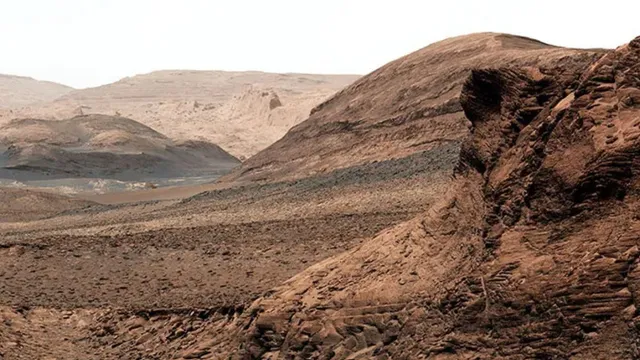- By Shivangi Sharma
- Sat, 15 Nov 2025 05:38 PM (IST)
- Source:JND
A team of scientists from Shenzhen University in China believes they may have uncovered the strongest evidence yet that Mars once hosted conditions capable of supporting alien life. Their research points to the discovery of a previously unknown type of cave system on the Red Planet, one likely formed by water pressure rather than volcanic activity.
If confirmed, this would mark the first known example of a Martian cave shaped by processes similar to water-formed karstic caves on Earth. Such formations could provide crucial clues about Mars’s ancient habitability.
For decades, scientists have focused their search for ancient Martian life beneath the planet’s hostile surface. Underground caves could have offered refuge from extreme radiation, piercing cold, and the powerful dust storms that regularly sweep across the planet.
Karst-like caves, typically carved over long periods through the dissolution of minerals by water, would suggest that liquid water once persisted long enough to shape substantial geological features. On Earth, similar caves are often home to microbial ecosystems, making them prime targets in astrobiology.
ALSO READ: Jaishankar Chairs Key Diplomatic Meet In New York, Calls For Stronger India–US Engagement
Eight Mysterious ‘Skylights’ In Hebrus Valles
The Shenzhen University team, led by researcher Chenyu Ding, examined eight suspected cave openings, referred to as skylights, located in the Hebrus Valles region of Mars’s northern hemisphere. These pits had been identified in earlier Mars missions but had never been closely studied for evidence of water-related geology.
The findings, published in The Astrophysical Journal Letters, reveal that while most known Martian caves are lava tubes formed by volcanic flows, the Hebrus Valles pits show key differences.
Using data from NASA’s Mars Global Surveyor, particularly its Thermal Emission Spectrometer (TES), the researchers discovered that the surrounding terrain contains abundant carbonates and sulphates. These minerals dissolve easily in water, which strongly supports the possibility of water-driven cave formation.
A Possible Breakthrough In Mars Habitability Research
If the caves were indeed shaped by water pressure, it would further strengthen the case that Mars once had stable, long-lasting liquid water, a key requirement for life. The researchers emphasize that these caves could have provided underground habitats shielded from Mars’s harsh surface conditions, increasing the chances that microbial life may have once existed there.
The study’s authors argue that these newly identified formations should become priority targets for future rover missions and robotic explorers. Subsurface exploration has long been considered crucial for detecting preserved biosignatures.

